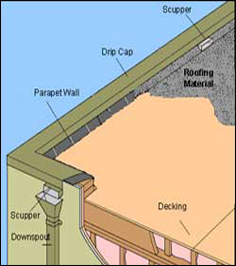Roofing, that has been keeping Chicago’s several flat roofs dry since 1934.
What area unit the various styles of flat roofs? settled roof (BUR), changed hydrocarbon roof (MBR), and rubber membrane roof (EPDM).
Pros and Cons for Flat Roof Materials
All 3 styles of flat roofing value $250 to $350 per “square” (100 sq. feet), however, costs vary per region and size of the roof. Flat roofs typically keep company with a 10- to 20-year warrant however will last twenty-five years if you build the roofs right and maintain them exploitation reasonable rules.
- settled Roof (BUR)
The traditional hot-tar-and-gravel roof is made from 3 or additional plies of waterproof material alternated with hot tar and ballasted by a layer of swish watercourse stone. Once fabricated from the roofing material, these styles of roofs bit by bit area unit exploitation more-advanced materials like covering material membranes. flat roofing bristol is popular for flat roofing.

Pros
- Gravel is superb hearth retardation.
- Attractive for windows and decks that overlook the roof.
- It’s the most cost-effective of the four roof varieties.
Cons
- Very heavy.
- Joists generally have to be compelled to be reinforced.
- Smelly and mussy to put in.
- The installation’s not suggested for occupied homes.
- It’s not a DIY installation job, and it’s exhausting to search out the supply of leaks.
- Gravel will clog gutters and scuppers.
- changed hydrocarbon Roof
A single-ply rolled roof just like ice-and-water defends, however fertile with a mineral-based wear surface. Torch-down systems involve heating the adhesive because the material is unrolled. Newer peel-and-stick systems are units safer and easier.
Pros
- Peel-and-stick material will be put in by householders.
- Its palish mineral surface reflects heat and cuts energy bills.
- Its worth is within the middle of the pack.
Cons
A torch-down application may be a hearth hazard, and not suggested for occupied buildings.
It’s not as scuff- or tear-resistant as rubber-membrane roofs (see ensuing item).
- Rubber Membrane Roof
EPDM (short for olefin gas diene monomer) may be a true rubber. The sturdy single-ply membrane material resembles an associate tube, however, it’s designed to resist injury from daylight. EPDM will be automatically anchored with fasteners, ballasted with stone, or glued.
Pros
- Homeowner-friendly installation.
- The material’s comparatively light-weight nevertheless extremely proof against scuffs and tears.
- Leaks area unit simple to patch.
Cons
The standard black material absorbs heat, and palish coatings (recommended in heat climates) add half-hour or additional to the value. Even the black version, though, prices over BUR or changed hydrocarbon.
It’s also additional at risk of punctures than alternative selections.
Knowing what style of flat building material is on your building will not stop your leaks however it’ll assist you to create higher selections concerning maintenance, roof repair associated/or commutation a recent flat roof system.
Knowing additional concerning your building’s roof will assist you to communicate and relate higher to potential roofing contractors as you bear the interview method to visualize that roofing company may be suited to your project.
- Bur or Build Up Roofs.
Bur or engineered up roofs are in use for over a hundred years within us and area unit typically cited as tar and gravel roofs. Layers of roofing felt typically 3 feet wide were patterned in and lined with liquid hot tar. staff would heat the asphalt tar or coal pitch to a liquid during a massive kettle then mop it on the roof.

